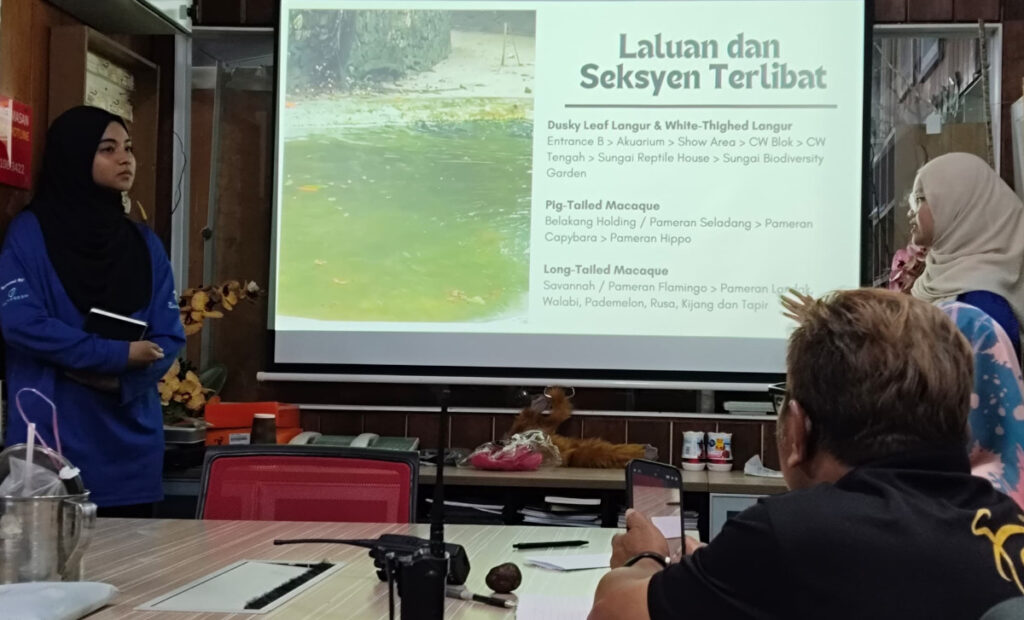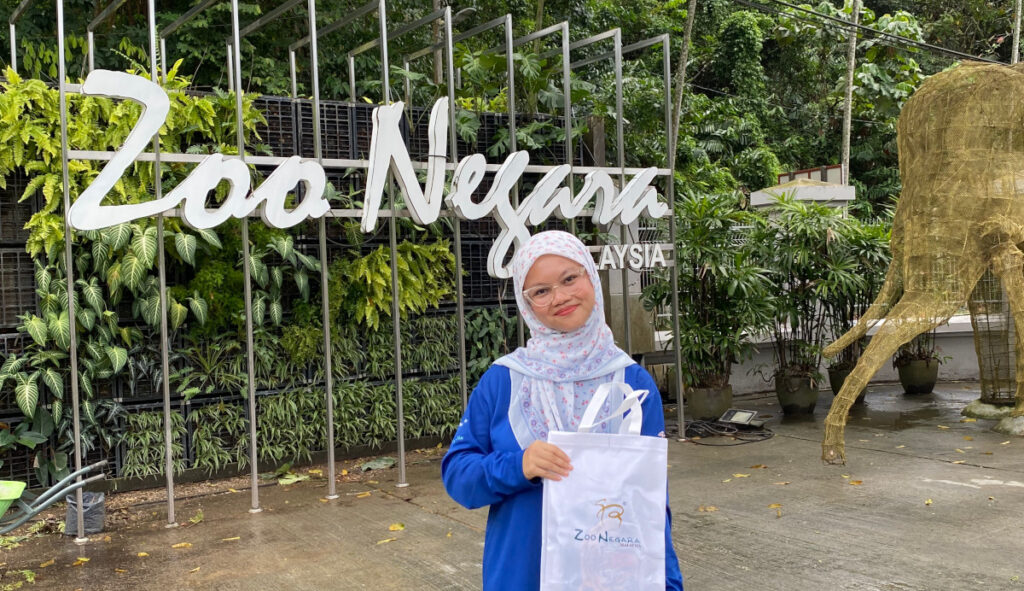By Siti Nurul Hisan Mohd Fadzli
Between July and October 2025, I had the incredible opportunity to undergo my industrial training at Zoo Negara Malaysia. As a final-year student in Ecology and Biodiversity at Universiti Malaya, I’ve always had a deep respect for wildlife. Still, nothing quite prepared me for how much this experience would deepen both my knowledge and my appreciation for the work that goes on behind the scenes in a conservation setting.
Zoo Negara is often seen as a tourist attraction. But for those of us who get the chance to spend time there as part of the team, it reveals itself as a centre of conservation, education and research. All three roles come together with a common goal: to protect Malaysia’s precious biodiversity. I was placed in the Zoology Department, where I engaged in various aspects of animal care and management through a well-structured and supervised programme.
Each week, I was rotated to a different section. This allowed me to experience a wide variety of animal husbandry practices. My daily tasks included cleaning enclosures, preparing meals, and helping monitor the health of the animals. Across 12 weeks, I worked in nine sections: Children’s World, Bear Complex, Reptile House, Savannah, Mammal Kingdom I, Biodiversity Garden, Bird House, Aquarium, and my personal favourite, the Carnivore section. That’s where the tigers, lions and cheetahs live.


Every section came with its own set of species and required procedures. I learned how to tailor food preparation based on each animal’s needs, how to ensure enclosures were clean and safe, and how to observe animal behaviour for signs of stress or illness. These were not just routines; they were lessons in patience, care and attentiveness.
The Carnivore section was especially impactful for me. It gave me the rare chance to observe the Malayan tiger, or Panthera tigris jacksoni, one of our national icons, now critically endangered. Zoo Negara is actively involved in the breeding of this species to help preserve its genetic lineage. Through hands-on experience and countless conversations with the zookeepers, I learned about the importance of planned breeding in conservation. It became clear that institutions like these play an essential role in ensuring that our wildlife does not disappear forever.
Besides daily tasks, I also took part in a mini research project to observe the behaviour of wild monkeys that roam the zoo grounds. This fieldwork taught me how to use observation techniques, record behavioural data and analyse interactions among primates that live near human activity. Our findings contributed to Zoo Negara’s efforts to manage monkey populations in a way that maintains ecological balance.
We identified four species of wild monkeys in the area: Long-tailed Macaque (Macaca fascicularis), Pig-tailed Macaque (Macaca nemestrina), White-thighed Surili (Presbytis siamensis), and Dusky Langur (Trachypithecus obscurus), locally known as kera, beruk, surili and lutong. Watching how these monkeys adapted and interacted with both their environment and humans offered me new insights into co-existence and behavioural flexibility.
Of course, the work came with challenges. It was physically demanding and required adherence to strict safety protocols. But it also shaped my character. I learned how to communicate better, how to work effectively with others, and how to stay focused in a fast-paced environment. The guidance from experienced zookeepers and the camaraderie with fellow interns from different universities helped me stay grounded and motivated.
Looking back, this industrial training has been one of the most transformative experiences of my academic journey. It gave me more than just practical skills. It gave me clarity on what I want to pursue. I now carry with me not just knowledge of biodiversity, but also a strong sense of purpose to contribute to the field of conservation and ecological research.
And if you ever find yourself wondering how to play a part in wildlife conservation, start by paying closer attention. Visit a zoo or sanctuary not just as a tourist, but as a curious learner. Ask questions. Observe. Understand. Sometimes, the first step to protecting nature is simply learning to see it with new eyes.
Siti Nurul Hisan Mohd Fadzli is a final year student of science ecology and biodiversity at Faculty of Science, Universiti Malaya.
